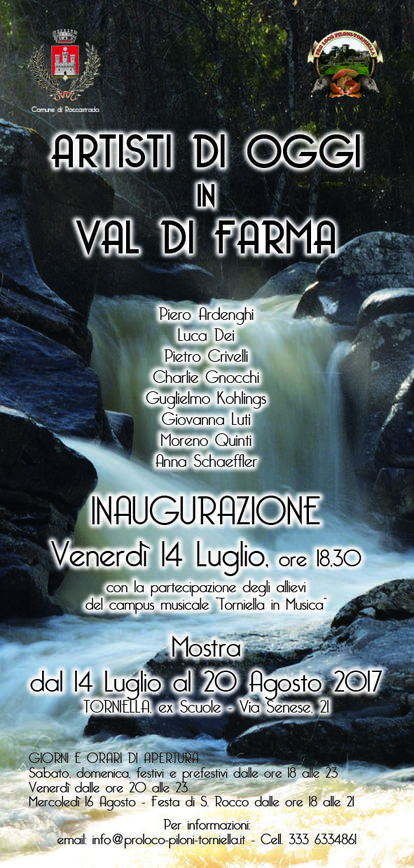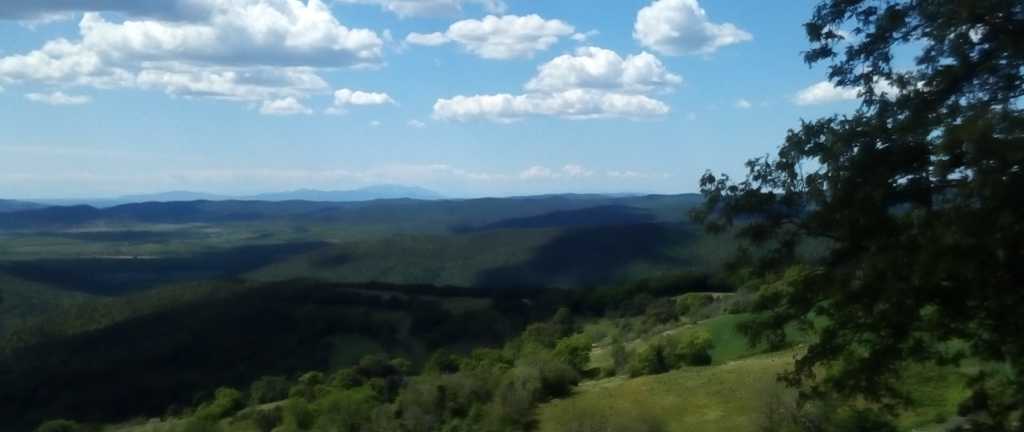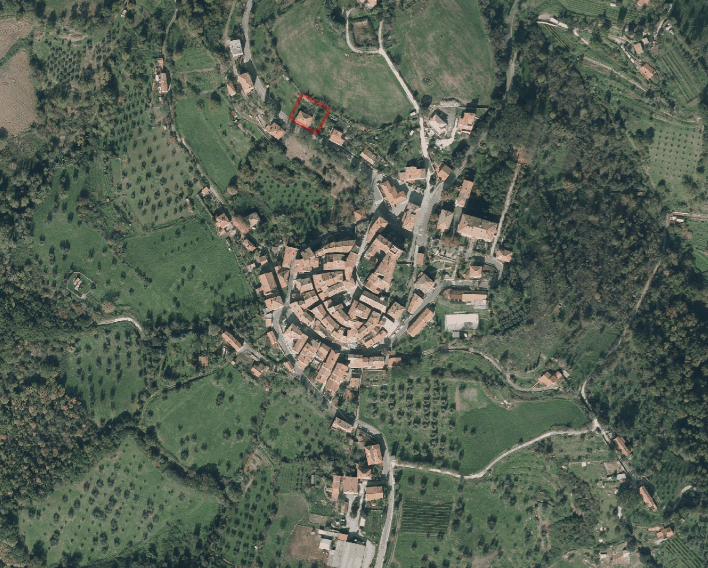The game is currently played in six tiny villages of Southern Tuscany, about 100 km South of Florence, in the areas of Siena and Grosseto (mostly Grosseto). In alphabetical order:
Category Archives: Senza categoria
Darkness Conference at the Svalbard Islands, Jan. 15/16 2019: how did it go?
by Luciano Massetti – CNR IBIMET Firenze (l.massetti@ibimet.cnr.it)
DARKNESS was the topic discussed during the full arctic night in Longyearbyen, the northernmost city of the world (latitude ~ 78° N), in the Svalbard Islands, North of Norway.
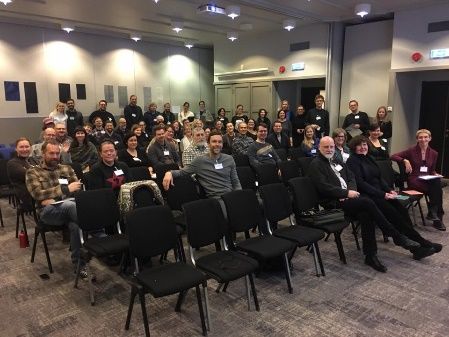
The conference had over 90 experts from 22 countries, dealing with the topic of darkness from multiple angles.
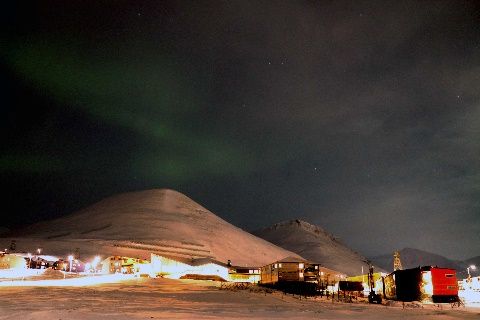
Luciano Massetti presented the joint activities conducted by CNR IBIMET in collaboration with the Department of Biology from the University of Pisa and the BuioMetria Partecipativa project.
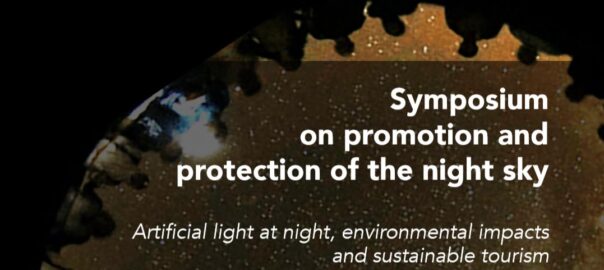
The Proceedings of the Symposium on Protection and Promotion of the Night Sky (Capraia Island, Italy, 2018)
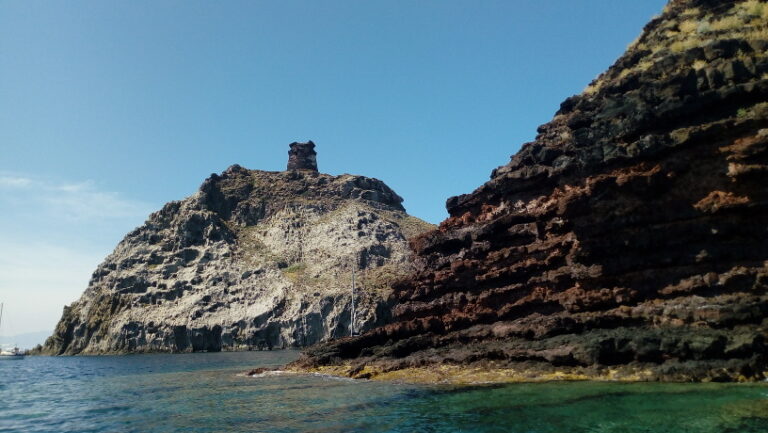
Download the symposium proceedings (PDF 2.5 Mb)
A summary of the event: http://www.pibinko.org/capraia-night-sky-2018-how-did-it-go/
For more information and booking: bmp@pibinko.org
save the date: Arts Exhibition in Torniella – from Jul. 14 to Aug 20, 2017
Forestano’s House in Tatti, Southern Tuscany
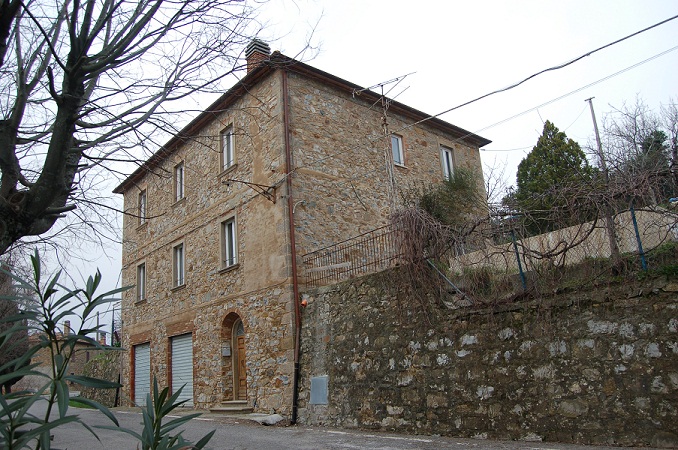 Forestano Giacomelli built this house between the late Forties and the early Fifites, together with his father-in-law, Tommaso (Maso) and his wife, Maddalena. He lived there until 1954, when unfortunately his wife passed away.
Forestano Giacomelli built this house between the late Forties and the early Fifites, together with his father-in-law, Tommaso (Maso) and his wife, Maddalena. He lived there until 1954, when unfortunately his wife passed away.
After his retirement, and until he was able to travel and work, Forestano took care of the house. One of the garages was his workshop. The family has preserved numerous documents and objects related to the story of the place. The house was renovated in 2014.
Where is Tatti
Tatti is at the heart of the Metalliferous Hills of Southern Tuscany. About 250 km North of Rome and 100 South of Florence:
View Larger Map
The hamlet is one of the places where you are in the laid back inner part of the region, but you can still see the sea. In the shot below, taken in April 2017 from Tatti, the relief you see on the horizon is in fact the Elba Island (and in clearer days you can clearly see the peaks of Corsica):
Below is the 1-km surrounding area: in the immediate proximity of the village we have cultivated fields, then surrounded by woods. Proceeding towards the coast this tends to Maquis, while going North and East you will find woodland:

This is a close-up on the village. Forestano’s House (bordered in red) is in the Northern area, along road directe to Massa Marittima or Siena.
The hamlet has about 200 residents, which more or less doubles during the tourist season.
Eating and shopping
In the village you will find: a restaurant with typical Tuscan food and a cafe, another smaller cafe, a grocery shop, and a post office.
You may also buy fresh products directly from the local farmers. For other shopping needs, the closest place is Roccatederighi (8 km), followed by Ribolla (10 km) e Gabellino (11 km, just with a cafe, tobacco, and two restaurants).
The first floor apartment
About 100 square metres, two bedrooms, one bathroom, a large living room with a fireplace, a smaller living room, and a kitchen. Heating for the cold season is with a pellet stove. There is also a garden with a large terrace.
The apartment is for rent for short periods (typically per week or fortnight, but other combinations may be arranged) during all the year. For more information: info@pibinko.org
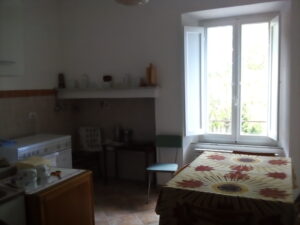
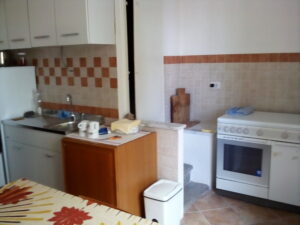
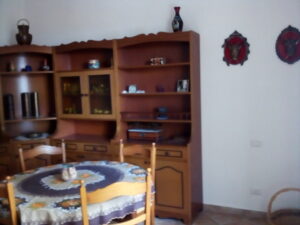
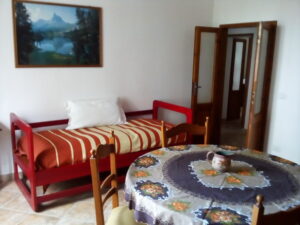
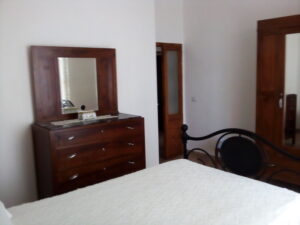
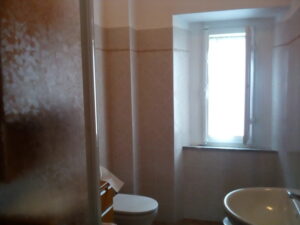
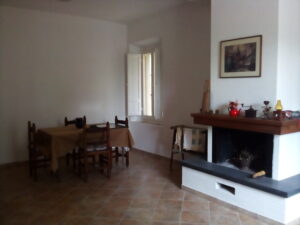

At the Eye on Earth Summit in Abu Dhabi, with the BuioMetria Partecipativa project
Left, a pibinko look-alike hired via a casting agency, togethere with the real Francisco Z from Salvador. Please also see the abstract of the presentation given at the Ecocity World Summit during the same trip: The Buiometria Partecipativa Project: Participatory Night Sky Quality Monitoring In Italy. Helping To Liaise Cities And Rural Areas And To Re-Define Citizen Perception Of Artificial Light At Night.
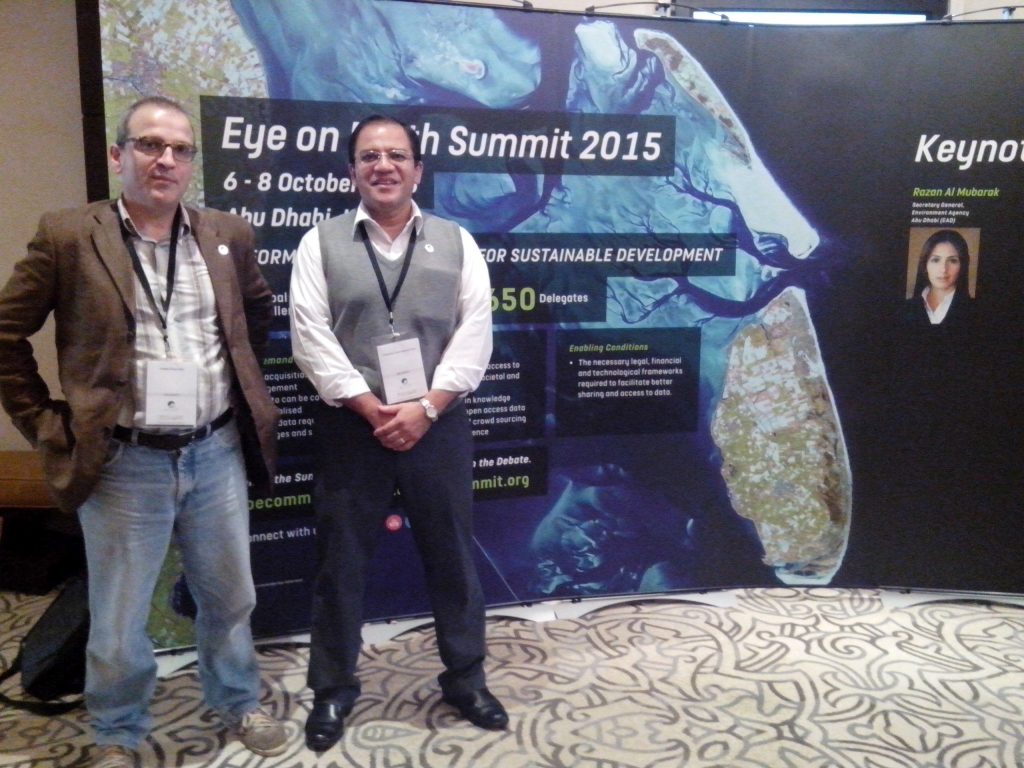
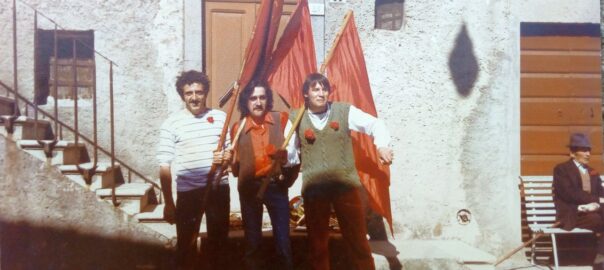
With Bob and Mariano at S. Maria alla Scala for the Siena Capital of Culture Workshop
TO BE TRANSLATED ‘
Sintesi estrema di questa storia, se non avete tempo: Mariano di Scalvaia (al centro nella foto di testa) 1 – Ecosistema Culturale Nazionale 0.
Altrimenti, proseguite, sulle note dei Seguridad Social
Nel 2014 varie città italiane concorrevano per definire quale sarebbe stata la candidata a capitale europea della cultura 2019. Fu poi Matera…ma nel 2014 ancora non si sapeva, e tutte le partecipanti si davano da fare per essere le più belle, le più intellettualmente attive ecc ecc.
Nel frattempo all’epoca eravamo in pista con l’associazione Attivarti.org (ora in coma farmacologico dati gli sviluppi sulla normativa del terzo settore): stavamo organizzando la trasferta di palla a 21 a Milano e altre cose ganze. In parallelo, con la BuioMetria Partecipativa avevo da un anno il ruolo di referente per l’Italia in un progetto europeo del programma COST (cooperazione scientifica) ecc. ecc.. diciamo che sul piano culturale e scientifico, stavamo facendo il nostro, avevamo dei riconoscimenti reali, e qualche lira.
La questione della capitale della cultura mi interessava come potenziale spazio in cui proporre le nostre storie. Seguendo via via le questioni nel senese, venni a sapere che organizzavano una serie di incontri per contribuire a mettere a filo il dossier della candidatura di Siena. Uno di questi incontri aveva un titolo che dal 2020 per diverso tempo diventerà difficile usare: “Infective Roads“…la cosa era forse riferita al fatto che la cultura si può diffondere attraverso vie di comunicazione e quindi fare bene…. comunque. Rispondendo all’invito, mandai questa mail:
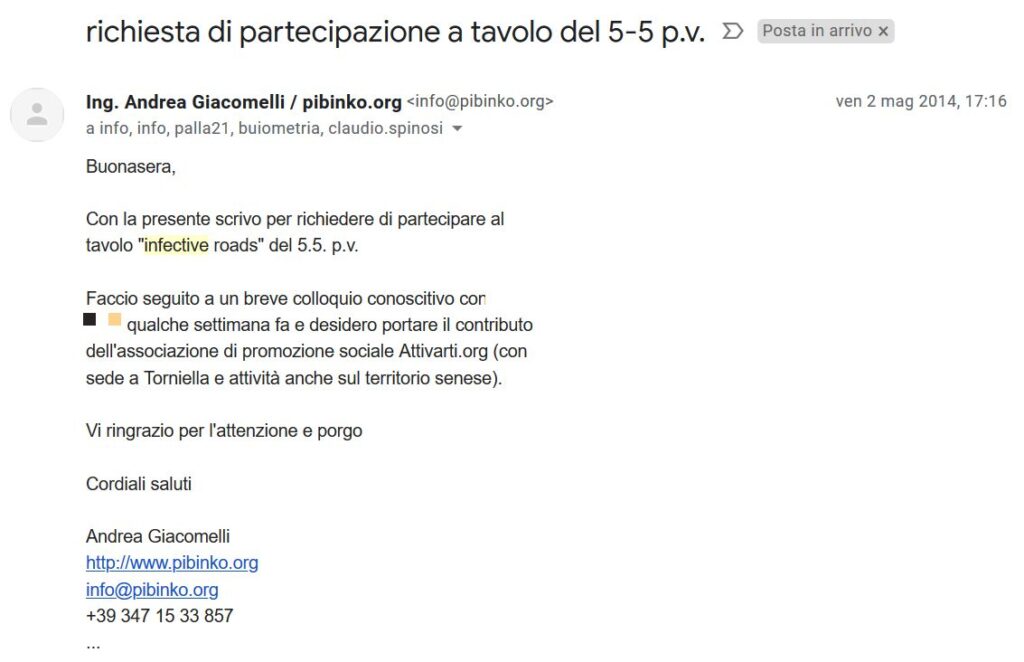
L’incontro sarebbe stato il pomeriggio di lunedì 5 maggio, in una delle sale del complesso museale di S. Maria alla Scala, il vecchio ospedale, dirimpetto al Duomo di Siena.
Mi metto in marcia da Torniella. Dopo un quarto d’oretta arrivo a Monticiano, e nella piazza principale vedo Roberto, detto Mariano, detto Sandokan, di Scalvaia, che aspettava. Mariano era uno dei coprotagonisti dei telefilm sulla palla a 21 che giravamo dal 2007. Era anche uno dei principali barzellettieri della Val di Farma (a Scalvaia organizzavano proprio a maggio la sagra della barzelletta con pranzo e a seguire sfida di barzelle fra Mariano come “resident” contro il resto del mondo, a partire da una parente di Roccastrada).
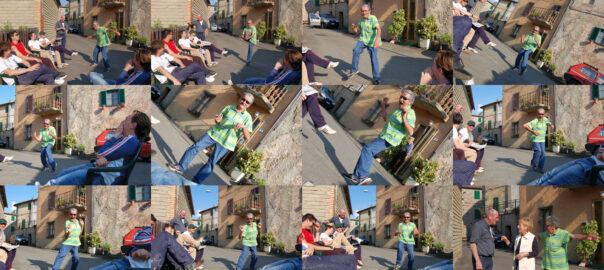
Comunque: essendo Mariano senza auto, ma con la necessità in quel periodo di recarsi nel capoluogo comunale per alcune pratiche, prendeva l’autobus della mattina per Siena. Poi sbrigava le sue pratiche, magari in mezz’ora, e dopo, essendo senza auto, a 7 km da casa e non in grandissima forma fisica, aspettava. O un passaggio di qualche conoscente (cosa non improbabile data la logistica delle valli Farma/Merse), o alla peggio l’autobus che ritornava in giù, ma dopo diverse ore.
Accosto. “Ciao Mariano, come stai?”. “Oh Andrea, ciao…che bbevi?”. …[OMISSIS]. Dopo un paio di [OMISSIS] Mariano mi chiede se gli posso dare un passaggio a Scalvaia. Gli dico volentieri, ma in effetti sto andando a Siena a una riunione ecc ecc.
Poi, saranno stati gli [OMISSIS] o uno dei momenti di linearità che si manifestano via via nelle storie della rete pibinko.org, ma faccio a Mariano una proposta. Gli spiego meglio del convegno e gli chiedo se è interessato a venire anche lui. Un’occasione per far due passi a Siena (comunque mi interessava che venisse al convegno).
Mariano non ci pensa due volte. Poi aggiunge “…ma Bob viene?”. Dico io non lo so, ma sentiamolo. Chiamo Bob. Bob era in effetti di rientro dal lavoro da uno dei suoi clienti (un personaggione con titoli nobiliari di cui avremo modo di riparlare) che vive a 2 km in linea d’aria da S. Maria alla Scala. Comunque ci dice che sarebbe venuto volentieri anche lui e di aspettarlo a Monticiano, in modo da fare una macchina sola. Nell’attesa dell’arrivo di Bob, per scrupolo, scrivo una mail alla segreteria del convegno:
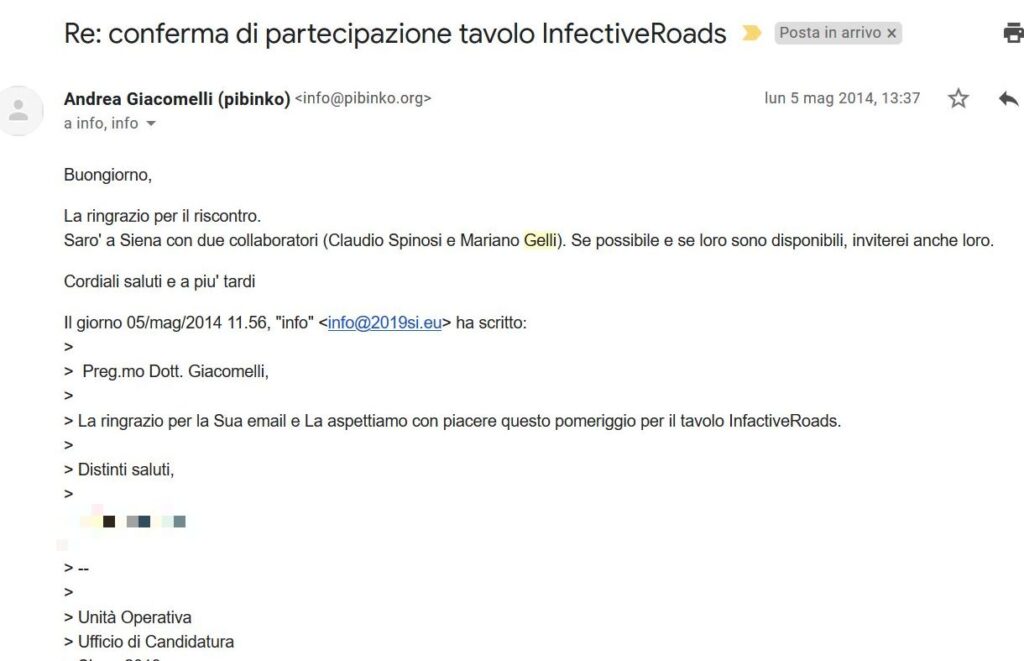
Bob arriva a Monticiano. “Ciao ragazzi, come va?”. “Che bbevi?”. [OMISSIS]. Si parte per il convegno a bordo della Lancia Y di ordinanza. Io vestito più o meno da ingegnere, Bob coi calcinacci del cantiere, e Mariano vestito da Mariano.
La risposta alla mail mi arrivò mentre eravamo probabilmente in viaggio:
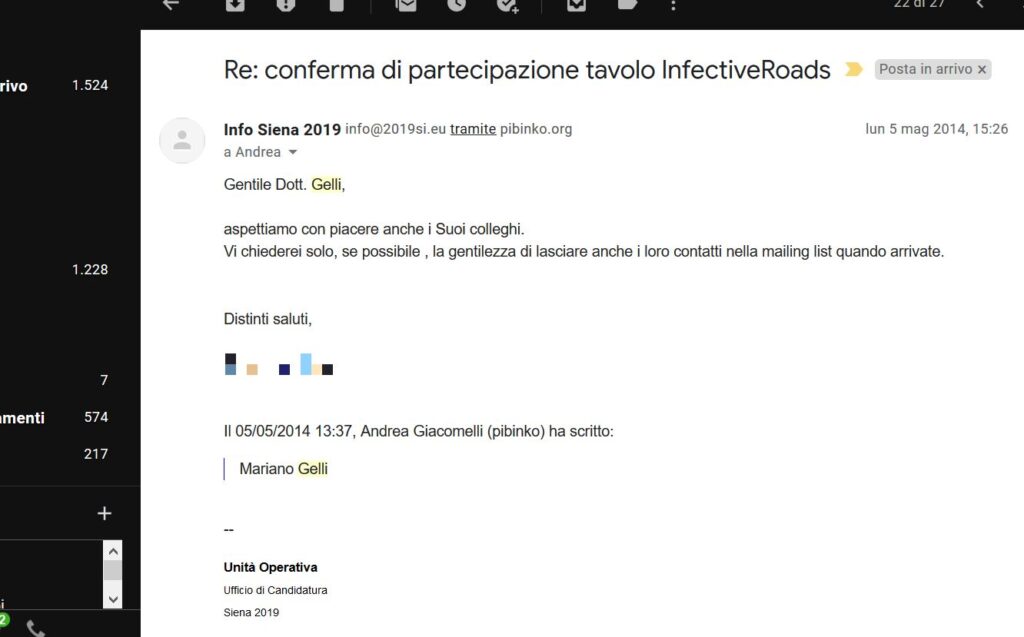
[STACCO SU PIAZZA S. MARIA ALLA SCALA, DAVANTI ALL’INGRESSO DEL COMPLESSO MUSEALE]
Bob e Mariano, davanti alla prospettiva di dover stare due ore in un ambiente dove non si può fumare, consumano quattro o cinque sigarette di fila in 5 minuti.
Entriamo, ci fanno passare per il convegno. Scendiamo varie scale. Ambiente molto suggestivo tra mura medioevali e arredi ultramoderni. Arriviamo alla sala del convegno. Circa 150 partecipanti.
Come molti eventi di questo tipo, la scaletta prevede alcuni relatori “keynote” che diano un po’ il La. Poi, se le cose sono fatte bene, esiste un criterio per proporsi per intervenire. Se no si aprono scenari di marasma comunicativo. In questo caso le cose erano fatte bene, per cui mi iscrivo per parlare e torno al mio posto. Con Bob e Mariano ci eravamo strategicamente seduti in ultima fila, in modo che loro potessero uscire per fumare.
La teoria di presentazioni si snoda fra cose più o meno interessanti e/o innovative. Mariano, che era piuttosto debole, ogni tanto si inclinava da un lato, quasi appisolandosi. Bob lo riprendeva bonariamente: “via, Roberto… “.
A un certo punto viene il mio turno, e ho i miei 5 minuti di visibilità nell’ecosistema culturale della capitale mondiale del pan pepato, del Monte dei Paschi e della Mens Sana (basket). Fra le altre cose, in riferimento a uno dei temi, che era il tenere eventi durante l’anno della cultura anche fuori Siena, ricordo di aver chiesto a quanti chilometri dalle mura prevedevano di arrivare. Non in tono polemico, ma proprio per il fatto che avevamo già fatto cose in terra senese, ma non vicino alla città, e negli anni avevano registrato una certa difficoltà a entrare in relazione con stakeholder a nord del fiume Merse, al di là di qualche scambio occasionale.
Comunque. Finisco di parlare, moderati applausi di rito, e torno al posto. Riprendono altri interventi. Mariano continua a non essere sempre vigile, non aiutato dall’atmosfera ovattata e dalle luci soffuse.
A un certo punto, va a parlare un signore vestito di nero, un po’ alla Steve Jobs, e dice “Sapete, io ho visto da poco un documentario sul Tibet. Lì facevano vedere che usano le capre per tenere puliti i giardini. Questa è una pratica interessante, di cui ci potrebbe tenere conto nell’anno della cultura a Siena, per diffonderla in vari posti ecc ecc.”. Mentre questo signore spiegava la proposta, Mariano era in uno dei momenti di veglia. appena sente dire della cosa della capra, sbotta (a voce alta, dall’ultima fila…150 persone presenti): “Eh, l’hai fatta te la scoperta! Ché, ‘un si sapeva!”. Poi si zittisce. Io e Bob lo guardiamo con un misto di sorpresa e riflessione.
Dopo un po’ decidiamo di partire: non in ritirata strategica, ma perché effettivamente abbiamo detto quello che dovevamo dire, sentito quello che dovevamo sentire, e perché non ha troppo senso far stare persone abituate a stare fuori in ambienti chiusi per troppo tempo.
Questo episodio di Mariano che risponde, magari in modo non garbato, ma “de core” all’intellettuale alla Steve Jobs che pensa di avere scoperto una pratica originale. Nel tempo è entrato nella top ten delle lezioni di relazione fra centri di conoscenza urbani e zone rurali.
Per informazioni e booking: micalosapevo@pibinko.org.
La foto di testa è di Pio Spinosi
Protected: The light club (in progress)
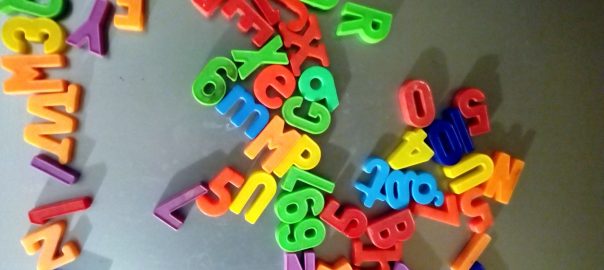
Contributing to the pibinko.org network newsletter
Introduction
In addition to numerous events and initiatives, since 2012 with the pibinko.org network we have dealt with communication about lesser known topics, places, people, and things.
You may have received these communications via email or via social networks…if not, you can check the pibinko.org site plus the jugbandcm.it site (the latter being dedicated to music) to have an idea of contents we deal with.
For this Autumn and for the coming Winter, we are planning to launch a new series of the pibinko.org newsletter, and for the first time we have the pleasure of hosting guests and contributors.
We have considered three types of contributions:
Articles
With…
- Title
- Sub-title
- Body text, maximum 2000 characters (spaces incluedes), in hypertext format (you can include links).
- From one to three images, with image credits, and captions if needed.
- if possible, a translation into Italian of the title, sub-title, body text, and captions.
- If you like, a song as a “soundtrack” for the article (please provide a link to the song)
Videos
With…
- Title
- Subtitle
- Link to the video
- if possible, a translation into Italian of the title and the sub-title
Photographs
With…
- Title
- Sub-title
- Link to the picture (or the file in JPEG format, maximum size 1Mb)
- If possible, a translation into Italian of the title and the sub-title.
A series of articles, videos, or photos
…just as above, but with an indication of how many “items” you would like to propose, and when they would be available, so that we may distribute them in time and, ideally, present them together with other affine or complementary contents.
Other types of contents
Let’s talk about it (micalosapevo@pibinko.org)
What next?
The proposals will be reviewed by our editorial board (composed by pibinko, Mauro the T-rex and other historical collaborators of the network). If the proposal will be considered in line with the mission of the network (promotion and protection of lesser known “stuff”), they will be accepted for publication.
We envision that these contents may have either an outreach and/or promotion scope, depending if you are a subject requiting outreach and/or promotion.
If you do not already have a profile page on the pibinko.org site (see “collaborations“), we will set up a page, and we will then schedule the publication of your contents.
The newsletters will be sent out to the audience we reach via our mailing list (circa ten thousand direct email addresses), in addition to multiple social netowrk channels. We will then monitor the feedback, and let you know if there are developments or requests specifically related to your contributions. Over the years we have found that it is not simple to forecast the outcome of our campaigns, given their extremely interdisciplinary approach; however we have also documented that they have never created issues, and on the other hand they have led to actual returns in terms of publicity, contacts, reservations, requests for services, etc.
At the end of this series of articles (roughly at the end of February, or later if the contributions will keep flowing), we will provide a summary report on the activity and…who knows…maybe a nice final event.
For information or inquiries, write to micalosapevo@pibinko.org
Sorry, we don’t have it!
You clicked on a pibinko.org link concerning something that we would like to document, but we do not have yet. If you happen to have text, photos, or videos related to it, please write to info@pibinko.org.
